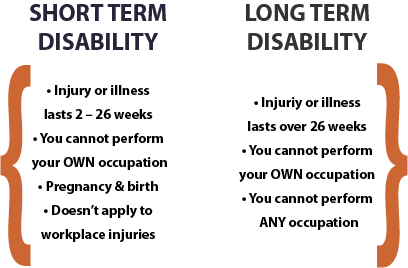Introduction
Embarking on the journey of entrepreneurship often begins with a simple, powerful idea: building something of your own. For many, a sole proprietorship is the perfect launchpad. This business structure, where one individual owns and operates the entire enterprise, offers unmatched simplicity, flexibility, and control. Whether you’re a freelancer, consultant, or artisan, a sole proprietorship allows you to turn your passion into a livelihood without the complexities of partnerships or corporate hierarchies. But while the path is straightforward, mastering it requires strategy, resilience, and a willingness to learn.
However, sole proprietorship isn’t without its challenges. As the sole decision-maker, you bear full responsibility for successes and setbacks alike. From managing finances to navigating legal requirements, every aspect of the business rests on your shoulders. Yet, with careful planning and incremental progress, these hurdles become stepping stones toward growth. This article will guide you through the art of building a thriving sole proprietorship—one deliberate step at a time.
In the following sections, we’ll explore everything from laying the groundwork for your business to scaling it sustainably. You’ll learn how to identify your niche, set up operations, and tackle common obstacles. By the end, you’ll have a roadmap to transform your vision into a resilient, fulfilling enterprise—and the confidence to make it happen. Let’s begin.
Understanding Sole Proprietorship
At its core, a sole proprietorship is the simplest and most accessible form of business ownership. Unlike corporations or partnerships, it requires no formal legal structure—just you, your skills, and your vision. In this model, you are the business: every decision, profit, and liability rests solely with you. But what does this mean in practice, and how does it shape your entrepreneurial journey?
What Is a Sole Proprietorship?
A sole proprietorship is an unincorporated business owned and operated by one individual. There’s no legal distinction between you and your business entity. For example, if you’re a freelance graphic designer selling services under your own name, you’re automatically a sole proprietor in most countries. No complex paperwork or registration fees are required to start—though licenses or permits may still apply depending on your industry or location.
This structure is ideal for solopreneurs who value autonomy. You keep all profits, make agile decisions, and pivot your business model without consulting partners or shareholders. However, this freedom comes with unlimited personal liability: debts or legal claims against the business extend to your personal assets, such as savings or property.
Key Advantages of a Sole Proprietorship
- Full Control: You steer the ship. From pricing to branding, every choice reflects your vision.
- Simplicity: Minimal startup costs and paperwork. In many cases, you can launch with little more than a business idea.
- Tax Flexibility: Profits are taxed as personal income, avoiding the double taxation faced by corporations.
- Direct Customer Relationships: As the face of your business, you build trust and loyalty faster.
Potential Drawbacks to Consider
- Unlimited Liability: Personal assets are at risk if the business faces lawsuits or debts.
- Limited Growth Capital: Raising funds can be challenging since you can’t sell shares or attract investors as easily as a corporation.
- Workload Pressure: Juggling all roles—from CEO to accountant—can lead to burnout without proper systems in place.
Is a Sole Proprietorship Right for You?
This model shines for low-risk, service-based ventures (e.g., consultants, tutors, or artisans) and those testing a business idea before scaling. If you thrive on independence and are prepared to mitigate risks through insurance or legal safeguards, it’s a powerful way to start small and grow intentionally.
Now that you understand the basics, let’s dive into the actionable steps to launch and nurture your sole proprietorship—turning your dream into a sustainable reality.
Steps to Start a Sole Proprietorship
Launching a sole proprietorship is like assembling a puzzle: each piece must fit seamlessly to reveal the bigger picture. While the process is straightforward, success hinges on deliberate planning and execution. Below, we break down the essential steps to transform your vision into a functional, profitable business.
1. Identifying Your Business Idea
Every great business starts with a clear, actionable idea. Begin by asking:
- What are you passionate about? Your business should align with your skills, interests, and values.
- Does it solve a problem? Profitable ideas often address unmet needs in your community or industry.
- Who is your audience? Define your target customers—knowing their pain points will shape your offerings.
Test your concept informally first. Offer samples, run surveys, or freelance part-time to validate demand. For instance, a home baker might start by supplying treats to local cafes before opening a storefront.
2. Creating a Business Plan
A business plan isn’t just for securing loans—it’s your roadmap to clarity. Keep it simple but thorough:
- Goals: Outline short-term (e.g., acquire 50 clients in 6 months) and long-term objectives.
- Services/Products: Detail what you’ll sell and what makes it unique.
- Market Analysis: Research competitors and identify gaps you can fill.
- Financial Projections: Estimate startup costs, pricing, and revenue targets.
Tools like Canva or free templates from the Small Business Administration (SBA) can simplify this process.
3. Registering Your Business Legally
While sole proprietorships don’t require incorporation, certain formalities ensure legitimacy:
- Business Name: Decide whether to operate under your legal name or a “Doing Business As” (DBA) alias.
- Licenses/Permits: Check local regulations—home-based food businesses, for example, often need health permits.
- Tax Compliance: Obtain an Employer Identification Number (EIN) from the IRS if you plan to hire employees.
Pro Tip: Registering a domain name early protects your brand identity, even if you’re not ready to build a website.
4. Setting Up Business Operations
Streamline workflows to maximize efficiency from day one:
- Workspace: Designate a dedicated area, whether a home office or rented studio.
- Tools: Invest in essentials like accounting software (QuickBooks), project management tools (Trello), or industry-specific equipment.
- Suppliers/Vendors: Build relationships with reliable partners for materials, shipping, or outsourcing tasks like graphic design.
Automate repetitive tasks (e.g., invoicing) to free up time for high-value work.
5. Managing Finances Efficiently
Financial discipline separates thriving businesses from struggling ones:
- Separate Accounts: Open a business bank account to avoid mingling personal and business funds.
- Budgeting: Track income and expenses meticulously—apps like Mint or Wave simplify this.
- Taxes: Set aside 25–30% of income for taxes and consider working with a CPA to maximize deductions.
Pro Tip: Offer multiple payment options (credit cards, PayPal) to reduce friction for clients.
6. Marketing and Branding Your Business
Build visibility and trust with strategic marketing:
- Brand Identity: Design a memorable logo, color palette, and tagline that reflect your values.
- Online Presence: Launch a website (using platforms like Wix or Squarespace) and leverage social media where your audience spends time.
- Networking: Attend local events, join industry groups, or collaborate with complementary businesses for referrals.
Content marketing (blogs, YouTube tutorials) can position you as an expert in your niche.
7. Managing Growth and Expanding Your Business
Growth requires intentional scaling:
- Outsource Wisely: Hire freelancers for tasks outside your expertise (e.g., bookkeeping).
- Diversify Offerings: Add complementary services—a fitness coach might sell workout plans or partner with supplement brands.
- Reinvest Profits: Allocate earnings to marketing, equipment upgrades, or training to fuel long-term success.
Regularly revisit your business plan to adapt to changing market trends.
8. Overcoming Challenges as a Sole Proprietor
Anticipate common hurdles and prepare solutions:
- Isolation: Join mastermind groups or online communities for support and accountability.
- Financial Risks: Purchase liability insurance or form an LLC later to protect personal assets.
- Burnout: Set boundaries—schedule downtime and automate tasks to avoid overwhelm.
Remember, challenges are growth opportunities in disguise.
With these steps, you’ll lay a robust foundation for your sole proprietorship. Next, we’ll explore strategies to sustain and scale your business while staying true to your vision.
Managing and Growing Your Sole Proprietorship
Once your sole proprietorship is up and running, the real work begins: refining your operations, nurturing your brand, and strategically scaling your impact. Unlike larger businesses, your agility is your superpower—but sustaining growth requires intentional systems and adaptability. Here’s how to evolve from surviving to thriving.
Build Systems That Work Smarter, Not Harder
As a solo entrepreneur, your time is your most valuable asset. Streamlining workflows prevents burnout and frees you to focus on high-impact tasks:
- Automate Repetitive Tasks: Use tools like Zapier to connect apps (e.g., automatically save email attachments to Google Drive) or Calendly to simplify appointment scheduling.
- Delegate Strategically: Outsource time-consuming tasks like bookkeeping, social media management, or customer service to freelancers or virtual assistants.
- Document Processes: Create step-by-step guides for routine activities (e.g., client onboarding) to maintain consistency and ease training if you hire help later.
Pro Tip: Audit your workflow monthly. Eliminate or improve processes that drain energy without adding value.
Strengthen Financial Health
Financial stability fuels growth. Beyond basic budgeting, adopt these practices:
- Track Key Metrics: Monitor profit margins, client acquisition costs, and cash flow trends. Tools like QuickBooks or FreshBooks generate real-time reports.
- Build an Emergency Fund: Aim to save 3–6 months of operating expenses to cushion against slow seasons or unexpected costs.
- Diversify Income Streams: Offer retainer packages, digital products (e.g., e-books), or subscription services to create recurring revenue.
Example: A freelance writer might supplement project-based income by selling pre-written templates or hosting workshops.
Cultivate Customer Loyalty
Repeat clients are the backbone of sustainable growth. Foster lasting relationships by:
- Delivering Exceptional Value: Underpromise and overdeliver—throw in a free consultation or personalized follow-up.
- Creating a Feedback Loop: Send post-project surveys to identify areas for improvement and show clients their opinions matter.
- Launching a Loyalty Program: Reward repeat customers with discounts, early access to new services, or referral bonuses.
Word-of-mouth referrals are gold for sole proprietors. A happy client can become your most effective marketing tool.
Reinvest in Your Business (and Yourself)
Growth demands investment. Allocate profits to areas that amplify your capacity:
- Skill Development: Enroll in courses or attend workshops to stay ahead of industry trends.
- Technology Upgrades: Invest in faster software, better equipment, or cybersecurity tools to enhance efficiency and credibility.
- Brand Visibility: Allocate a monthly budget for targeted ads, SEO optimization, or professional photography to elevate your market presence.
Don’t neglect self-care—schedule regular breaks and invest in hobbies to avoid creative burnout.
Scale Sustainably
Expanding too quickly can strain resources. Grow mindfully by:
- Niche Down: Focus on a specialized service where you excel, rather than trying to be everything to everyone.
- Collaborate: Partner with complementary businesses (e.g., a web designer teaming up with a copywriter) to offer bundled services.
- Consider Hybrid Models: As demand grows, explore transitioning to an LLC or hiring part-time employees to share the workload.
Remember: Growth isn’t just about revenue—it’s about creating a business that aligns with your lifestyle and values.
By balancing innovation with stability, you’ll transform your sole proprietorship into a resilient, adaptable enterprise. In the next section, we’ll tackle common challenges and how to turn them into opportunities for growth.
Success Stories: Inspiring Sole Proprietors
Behind every thriving sole proprietorship is a story of grit, creativity, and resilience. These real-world examples prove that with passion and strategy, even the smallest ventures can leave a big impact. Let’s meet three entrepreneurs who turned their solo dreams into sustainable successes.
1. From Hobby to Household Name: The Baker Who Conquered a City
Challenge:
Maya, a self-taught baker, started selling cookies at local farmers’ markets in Austin, Texas. Despite rave reviews, she struggled to stand out in a saturated market.
Action:
- Niche Focus: She pivoted to vegan, gluten-free desserts, tapping into an underserved audience.
- Community Building: Hosted free baking workshops to engage customers and build loyalty.
- Strategic Scaling: Partnered with coffee shops to wholesale her products, then launched a subscription box during the pandemic.
Outcome:
Within three years, Maya’s “Sweet Alchemy” became a local staple, earning six figures annually. “Staying small let me stay authentic,” she says.
2. The Freelancer Who Built a Global Brand
Challenge:
Raj, a graphic designer in Mumbai, faced feast-or-famine cycles common to freelancing. Clients saw him as a “hired hand,” not a trusted expert.
Action:
- Personal Branding: Launched a YouTube channel teaching design basics, positioning himself as an industry thought leader.
- Productization: Created sellable Adobe Illustrator templates and font bundles on Creative Market.
- Client Retention: Shifted to retainer contracts, offering ongoing support instead of one-off projects.
Outcome:
Raj’s income tripled, with 40% now from passive revenue. “Diversifying changed everything,” he shares.
3. The Fitness Coach Who Turned Passion into Profit
Challenge:
After a corporate layoff, Lena used her savings to start outdoor boot camps in Denver. Initial turnout was sparse, and winters threatened her cash flow.
Action:
- Seasonal Adaptation: Launched virtual training sessions and nutrition guides to offset seasonal dips.
- Community Partnerships: Collaborated with local gyms for indoor space in exchange for cross-promotion.
- Loyalty Rewards: Offered a “Bring a Friend Free” month to boost referrals.
Outcome:
Lena’s “Elevate Fitness” now runs year-round, with a 200-member community and a branded app for workout tracking.
Key Takeaways from These Stories
- Solve a Specific Problem: Each founder identified a gap and filled it uniquely.
- Leverage Community: Building relationships—with customers, peers, or partners—fuels organic growth.
- Adapt or Pivot: Flexibility turned obstacles into opportunities.
- Monetize Beyond Services: Digital products, subscriptions, or partnerships created multiple income streams.
These stories aren’t about luck—they’re about intentional action. Whether you’re baking cookies or building apps, your sole proprietorship can thrive by blending vision with adaptability. Up next, we’ll help you decide if this path aligns with your goals.
Conclusion: Your Journey Starts Here
Building a sole proprietorship is more than a business venture—it’s a testament to your vision, resilience, and ability to chart your own course. From the spark of an idea to the thrill of your first sale, this path offers unmatched freedom to create something uniquely yours. As we’ve explored, success lies in blending passion with pragmatism: validating your concept, planning meticulously, and adapting fearlessly.
The stories of Maya, Raj, and Lena remind us that even modest beginnings can lead to extraordinary outcomes. Their journeys weren’t defined by perfection but by persistence—whether pivoting to meet market needs, diversifying income streams, or fostering community trust. Challenges like financial risks or burnout aren’t roadblocks; they’re invitations to innovate.
As you weigh if a sole proprietorship aligns with your goals, remember this: Every thriving business started with a single step. Equip yourself with the tools we’ve discussed—strategic systems, financial discipline, and a customer-first mindset—and you’ll navigate hurdles with confidence.
So, take that step. Whether you’re drafting a business plan or launching your first marketing campaign, trust that each effort brings your dream closer to reality. The art of building a sole proprietorship isn’t about speed—it’s about purpose. Your journey begins now, and the possibilities are limitless.











